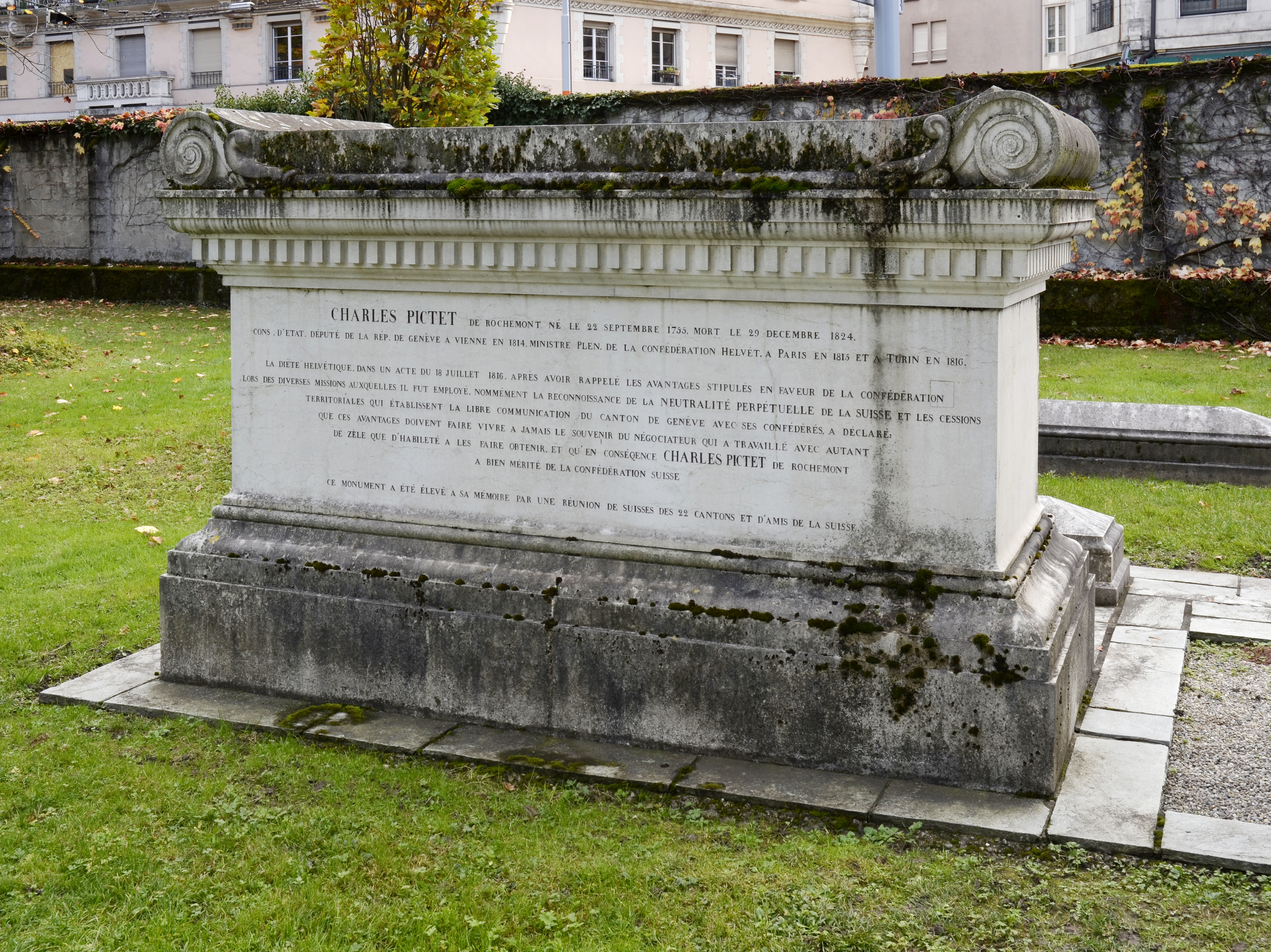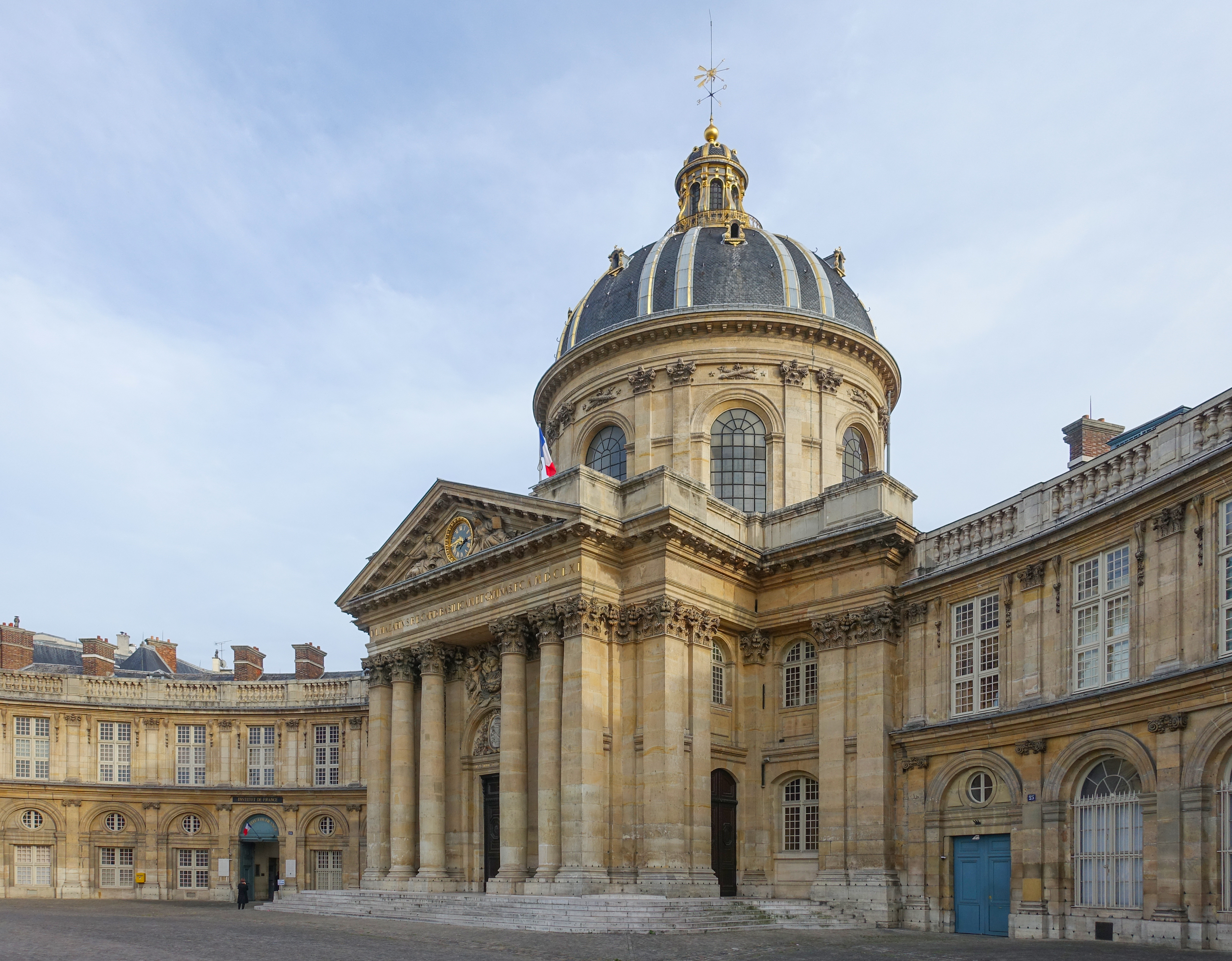|
Marc-Auguste Pictet
Marc-Auguste Pictet (; 23 July 1752 – 19 April 1825) was a Swiss scientific journalist and experimental natural philosopher. Pictet's main contribution to learning was his editing of the scientific section of the ''Bibliothèque Britannique'' (1796-1815), a publication devoted to the diffusion on the Continent of knowledge and arts produced in Great Britain. His own scientific research focused on the fields of physical science, especially calorimetry, but also astronomy, geology, meteorology and technology, especially chronometry and the manufacture of fine earthenware. Life He was born in Geneva, Republic of Geneva on 23 July 1752, the son of Charles Pictet, a military officer serving in the mercenary troops of the Netherlands, and his wife, Marie Dunant. Marc-Auguste studied natural philosophy and law at the Academy of Geneva and qualified as a lawyer in 1774. After one year in England (1775–76), he became assistant to Jacques-André Mallet at the Geneva Observat ... [...More Info...] [...Related Items...] OR: [Wikipedia] [Google] [Baidu] |
Geneva
Geneva ( ; french: Genève ) frp, Genèva ; german: link=no, Genf ; it, Ginevra ; rm, Genevra is the List of cities in Switzerland, second-most populous city in Switzerland (after Zürich) and the most populous city of Romandy, the French-speaking part of Switzerland. Situated in the south west of the country, where the Rhône exits Lake Geneva, it is the capital of the Canton of Geneva, Republic and Canton of Geneva. The city of Geneva () had a population 201,818 in 2019 (Jan. estimate) within its small municipal territory of , but the Canton of Geneva (the city and its closest Swiss suburbs and exurbs) had a population of 499,480 (Jan. 2019 estimate) over , and together with the suburbs and exurbs located in the canton of Vaud and in the French Departments of France, departments of Ain and Haute-Savoie the cross-border Geneva metropolitan area as officially defined by Eurostat, which extends over ,As of 2020, the Eurostat-defined Functional Urban Area of Geneva was made up of 9 ... [...More Info...] [...Related Items...] OR: [Wikipedia] [Google] [Baidu] |
Dutch States Army
The Dutch States Army ( nl, Staatse leger) was the army of the Dutch Republic. It was usually called this, because it was formally the army of the States-General of the Netherlands, the sovereign power of that federal republic. This mercenary army was brought to such a size and state of readiness that it was able to hold its own against the armies of the major European powers of the extended 17th century, Habsburg Spain and the France of Louis XIV of France, Louis XIV, despite the fact that these powers possessed far larger military resources than the Republic. It played a major role in the Eighty Years' War (opposite the Spanish Army of Flanders) and in the wars of the Grand Alliance (League of Augsburg), Grand Alliance with France after 1672. Precursors Despite the fact that the standard work by Ten Raa and De Bas about the States Army in its title proudly proclaims that the foundation of the army was laid in the first year of the Dutch war of independence, 1568, modern historian ... [...More Info...] [...Related Items...] OR: [Wikipedia] [Google] [Baidu] |
Charles Pictet De Rochemont
Charles Pictet de Rochemont (21 September 1755 – 28 December 1824) was a statesman and diplomat who prepared the declaration of Switzerland's permanent neutrality ratified by the great powers in 1815. Early life Charles Pictet was born on 21 September 1755 at Cartigny near Geneva into an aristocratic but tolerant family. He is the son of a colonel, Charles Pictet (1713–1792) and of Marie, born Dunant. From a young age, he wanted to dedicate himself to a military career. At the age of 20 he went to France and for twelve years pursued a career in the French Army. After his marriage in 1786 to Adélaïde Sara de Rochemont he modified his name to the more aristocratic "Pictet de Rochemont". Two years later he entered the governing council of Geneva and was made responsible for reorganizing the urban militia. In 1792 the former city councils of Geneva were suspended and a provisional government took over, declaring all citizens equal. In 1794 Pictet was placed under house arres ... [...More Info...] [...Related Items...] OR: [Wikipedia] [Google] [Baidu] |
Traité Élémentaire De Chimie
''Traité élémentaire de chimie'' (''Elementary Treatise on Chemistry'') is a textbook written by Antoine Lavoisier published in 1789 and translated into English by Robert Kerr in 1790 under the title ''Elements of Chemistry in a New Systematic Order containing All the Modern Discoveries''. It is considered to be the first modern chemical textbook. The book defines an element as a single substance that can't be broken down by chemical analysis and from which all chemical compounds are formed, publishing his discovery that fermentation produces carbon dioxide (carbonic gas) and spirit of wine, saying that it is "more appropriately called by the Arabic word alcohol since it is formed from cider or fermented sugar as well as wine", and publishing the first chemical equation "grape must = carbonic acid + alcohol", calling this reaction "one of the most extraordinary in chemistry", noting "In these experiments, we have to assume that there is a true balance or equation between the ... [...More Info...] [...Related Items...] OR: [Wikipedia] [Google] [Baidu] |
Heat
In thermodynamics, heat is defined as the form of energy crossing the boundary of a thermodynamic system by virtue of a temperature difference across the boundary. A thermodynamic system does not ''contain'' heat. Nevertheless, the term is also often used to refer to the thermal energy contained in a system as a component of its internal energy and that is reflected in the temperature of the system. For both uses of the term, heat is a form of energy. An example of formal vs. informal usage may be obtained from the right-hand photo, in which the metal bar is "conducting heat" from its hot end to its cold end, but if the metal bar is considered a thermodynamic system, then the energy flowing within the metal bar is called internal energy, not heat. The hot metal bar is also transferring heat to its surroundings, a correct statement for both the strict and loose meanings of ''heat''. Another example of informal usage is the term '' heat content'', used despite the fact that p ... [...More Info...] [...Related Items...] OR: [Wikipedia] [Google] [Baidu] |
Cold
Cold is the presence of low temperature, especially in the atmosphere. In common usage, cold is often a subjective perception. A lower bound to temperature is absolute zero, defined as 0.00K on the Kelvin scale, an absolute thermodynamic temperature scale. This corresponds to on the Celsius scale, on the Fahrenheit scale, and on the Rankine scale. Since temperature relates to the thermal energy held by an object or a sample of matter, which is the kinetic energy of the random motion of the particle constituents of matter, an object will have less thermal energy when it is colder and more when it is hotter. If it were possible to cool a system to absolute zero, all motion of the particles in a sample of matter would cease and they would be at complete rest in the classical sense. The object could be described as having zero thermal energy. Microscopically in the description of quantum mechanics, however, matter still has zero-point energy even at absolute zero, because ... [...More Info...] [...Related Items...] OR: [Wikipedia] [Google] [Baidu] |
Count Rumford
Sir Benjamin Thompson, Count Rumford, FRS (german: Reichsgraf von Rumford; March 26, 1753August 21, 1814) was an American-born British physicist and inventor whose challenges to established physical theory were part of the 19th-century revolution in thermodynamics. He served as lieutenant-colonel of the King's American Dragoons, part of the British Loyalist forces, during the American Revolutionary War. After the end of the war he moved to London, where his administrative talents were recognized when he was appointed a full colonel, and in 1784 he received a knighthood from King George III. A prolific designer, Thompson also drew designs for warships. He later moved to Bavaria and entered government service there, being appointed Bavarian Army Minister and re-organizing the army, and, in 1792, was made a Count of the Holy Roman Empire. Early years Thompson was born in rural Woburn, Massachusetts, on March 26, 1753; his birthplace is preserved as a museum. He was educated mainly ... [...More Info...] [...Related Items...] OR: [Wikipedia] [Google] [Baidu] |
Infra-red Radiation
Infrared (IR), sometimes called infrared light, is electromagnetic radiation (EMR) with wavelengths longer than those of visible light. It is therefore invisible to the human eye. IR is generally understood to encompass wavelengths from around 1 millimeter (300 GHz) to the nominal red edge of the visible spectrum, around 700 nanometers (430 THz). Longer IR wavelengths (30 μm-100 μm) are sometimes included as part of the terahertz radiation range. Almost all black-body radiation from objects near room temperature is at infrared wavelengths. As a form of electromagnetic radiation, IR propagates energy and momentum, exerts radiation pressure, and has properties corresponding to both those of a wave and of a particle, the photon. It was long known that fires emit invisible heat; in 1681 the pioneering experimenter Edme Mariotte showed that glass, though transparent to sunlight, obstructed radiant heat. In 1800 the astronomer Sir William Herschel discovered tha ... [...More Info...] [...Related Items...] OR: [Wikipedia] [Google] [Baidu] |
Mont-Blanc
Mont Blanc (french: Mont Blanc ; it, Monte Bianco , both meaning "white mountain") is the highest mountain in the Alps and Western Europe, rising above sea level. It is the second-most prominent mountain in Europe, after Mount Elbrus, and it is the eleventh most prominent mountain summit in the world. It gives its name to the Mont Blanc massif which straddles parts of France, Italy and Switzerland. Mont Blanc's summit lies on the watershed line between the valleys of Ferret and Veny in Italy, and the valleys of Montjoie, and Arve in France. Ownership of the summit area has long been a subject of dispute between France and Italy. The Mont Blanc massif is popular for outdoor activities like hiking, climbing, trail running and winter sports like skiing, and snowboarding. The most popular climbing route to the summit of Mont Blanc is the Goûter Route, which typically takes two days. The three towns and their communes which surround Mont Blanc are Courmayeur in A ... [...More Info...] [...Related Items...] OR: [Wikipedia] [Google] [Baidu] |
Cartography
Cartography (; from grc, χάρτης , "papyrus, sheet of paper, map"; and , "write") is the study and practice of making and using maps. Combining science, aesthetics and technique, cartography builds on the premise that reality (or an imagined reality) can be modeled in ways that communicate spatial information effectively. The fundamental objectives of traditional cartography are to: * Set the map's agenda and select traits of the object to be mapped. This is the concern of map editing. Traits may be physical, such as roads or land masses, or may be abstract, such as toponyms or political boundaries. * Represent the terrain of the mapped object on flat media. This is the concern of map projections. * Eliminate characteristics of the mapped object that are not relevant to the map's purpose. This is the concern of generalization. * Reduce the complexity of the characteristics that will be mapped. This is also the concern of generalization. * Orchestrate the elements of the ... [...More Info...] [...Related Items...] OR: [Wikipedia] [Google] [Baidu] |









